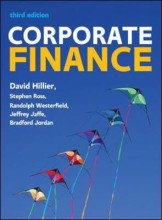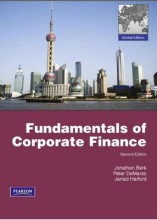Introduction to Corporate finance: the cost of capital and long-term financing
13 important questions on Introduction to Corporate finance: the cost of capital and long-term financing
What are market impact costs?
How can companies reduce the adverse selection problem?
2. Reduce information gap and make all investors informed investors by giving out more information.
What are ordinary shares?
- Higher grades + faster learning
- Never study anything twice
- 100% sure, 100% understanding
What is additional paid-in capital?
What is the book value of a company?
What are the downsides of limitless share issuance?
2. Issuing more shares may lead to dissatisfaction with shareholders, as they have no say over the issuance but the EPS decrease
What are the shareholder rights?
2. The right to participate proportionally in the assets after creditors are paid in case of bankruptcy
3. The right to vote on concerns that are important to shareholders, such as a merger
4. The right to participate proportionally in newly issued equity. (preemptive right, they always get the opportunity to buy newly issued shares before they are offered on the stock exchange)
What are the 3 key features of dividend?
2. Dividends are not a cost of the company, and therefore not tax deductible
3. Dividends are subject to personal tax
What are preference shares?
What are cumulative and non-cumulative preference shares?
What are the 3 biggest differences between debt and equity?
2. The interest payments on debt are tax deductible, whereas dividends are only paid out after taxes have been paid
3. Debts are a liability to the company, and can lead to creditors seizing possession of the company
What are the most common debt instruments?
2. Bill (T-bill) - short-term debt instrument that expires within a year
3. Consol - Perpetual debt (no maturity date set)
4. Note - Unsecured loan with maturity date of less than 10 years
What is the hierarchy of long term debt?
2. Second line loans - debt with collateral, but second in line
3. Senior unsecured debt
4. Subordinated/junior debt
5. Shareholder loans - loans issued by shareholders
6. Preference shares
7. Ordinary shares
The question on the page originate from the summary of the following study material:
- A unique study and practice tool
- Never study anything twice again
- Get the grades you hope for
- 100% sure, 100% understanding
































